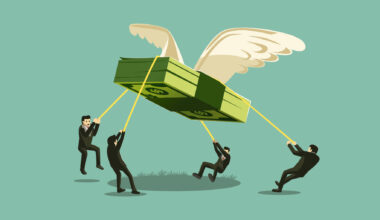The Consumer Price Index (CPI), a measure of inflation in the US, spent much of the 1990s below 3%, followed by two decades (2000-2020) where it barely registered above 2%. Then in 2021 it climbed to 5% and last year 8%. In Europe the spike in inflation has been even higher, after a similar period of 30 years of calm price levels.
We are currently living through the worst bout of inflation since the 1970s cycle of inflation in the developed world.
The 1970s inflation cycle was preceded by a period of low inflation in the 1960s, where the US CPI remained below 3% from 1958 to 1967. Then followed a spike up in inflation to peaks of 11% in 1974 and 14% in 1980. From start to finish, that cycle of elevated inflation above 4-5% lasted for 15 years.
It is understandable that many are now looking back to the inflation cycle of the 1970s as a guide to what is happening today.
There have, however, been many other inflationary cycles we use to inform us about the current cycle. The 1970s cycle is just the most recent one and the only cycle anyone still working (and writing financial news) is old enough to remember.
The root causes of the 1970s inflation are quite different to the causes today. The US then was funding the Vietnam War and a major social welfare program under Lyndon B. Johnson, creating a major sustained source of fiscal inflationary pressure, while the US exit from the gold standard and a sustained spike in energy prices due to the Arab oil embargo, resulted in a prolonged period of rising prices for the US and other economies.
The current inflationary cycle may have much more in common with the cycle of inflation seen after World War II. The conflict (1939-1945) saw the manufacturing base of all participant countries re-tool to produce weapons and war materiel. At the same time, via massive monetary and fiscal support, governments funded major spending programs to fight, and in the case of the United States and Britain, win the war.
Citizens were beneficiaries of this stimulus, with anyone who could work being enlisted into the military or into war production industries and being paid to do so. Meanwhile there was little to spend incomes on since the supply of consumer goods and services was restricted by the war. By the end of the conflict in 1945 and de-mobilisation in Europe and the US, consumers had high accumulated savings and a desire to spend, especially given the privations many had experienced during the war.
The supply side of the economy struggled to meet this demand for goods and services initially, as it took time to re-tool the manufacturing base away from producing tanks and warships and back to producing consumer goods.
This mismatch in post-war demand with a supply side restricted in ability to respond quickly, resulted in a spike in CPI in the US to 9% in 1946 and then 14% in 1947. After peaking, it declined over the next 12-18 months to average less than 1% in 1949 and 1950, as the supply side finally adjusted to the new levels of consumer demand and brought on new supply (higher supply reduces prices).
The experience of the pandemic has many similarities to the late 1940s. A period of ‘wartime’ economic stimulus characterised the response of European and American governments in 2020 and 2021, with major fiscal and monetary support packages to fund the fight against COVID and associated welfare packages to keep people in work and soften the blow of lockdowns for the private sector. Consumers accumulated savings through 2020-2021, with opportunities to spend their incomes limited by travel and movement restrictions imposed to fight the pandemic.
As economies were re-opened in late 2021 and 2022, consumers emerged with money to spend and a desire to spend it. Meanwhile, the supply side of the economy struggled to match the sudden spike in demand for goods and services, after two years of shutdowns and restricted activity. This resulted in the spike in inflation in 2021-2023, as too much demand was chasing too few goods and services.
The good news here is, if this cycle does have more in common with the 1940s than the 1970s, we can expect inflation to come back down to steady pre-pandemic levels as the supply side responds to higher prices.
Equity market performance during the bout of inflation in 1946-1948 was poor, mirroring the weakness seen in 2022. After this, however, 1949-1952 saw four years of very strong positive moves up in equities, as inflation concerns subsided, and real economic growth rates improved.
We must always be careful not to assume history will ever repeat exactly, but nonetheless the parallels with the 1940s are interesting and could offer a much more helpful guide as to how this current inflationary cycle will play out than the 1970s.
Links: Post | Image
Disclaimer: The views expressed in this article are those of the author at the date of publication and not necessarily those of Dominion Capital Strategies Limited or its related companies. The content of this article is not intended as investment advice and will not be updated after publication. Images, video, quotations from literature and any such material which may be subject to copyright is reproduced in whole or in part in this article on the basis of Fair use as applied to news reporting and journalistic comment on events.


